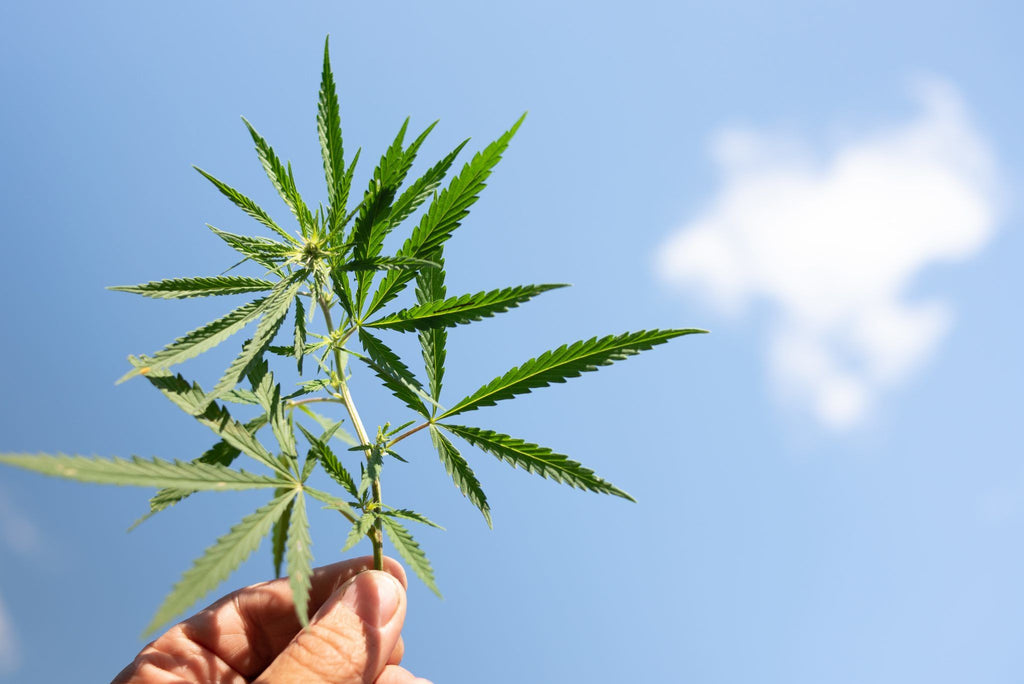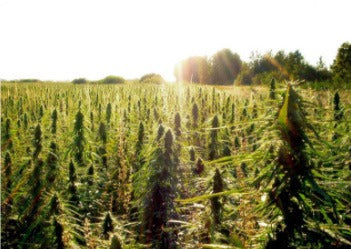A Simple Guide to CBD Terminology

If you’re curious about CBD but can’t quite understand all the lingo that goes with it, we completely understand. The vocabulary surrounding the ever-expanding world is so vast it’s enough to make your head spin. If you’re new to CBD, navigating your way through the terminology used to describe it can make you feel even more confused than when you started!
If you’re interested in seeing how CBD might support your own wellbeing, it’s important to know what all the technical jargon surrounding CBD really means. Following is an alphabetized glossary that will make it easier to understand all that CBD terminology.
Anandamide: A fatty acid neurotransmitter that is one of the body’s two naturally occurring endocannabinoids, a fatty acid neurotransmitter that plays a role in the regulation of pain, pleasure, motivation, memory, mood, appetite, and fertility.
Bioavailability: The amount of a substance that enters circulation and is absorbed by the body to produce an active effect.
Broad Spectrum: CBD oil that has been extracted from the hemp plant and contains many of the plant’s naturally-occurring compounds, which may include terpenes, flavonoids, and other cannabinoids except for detectable THC.
Cannabidiol: The scientific name for CBD.
Cannabinoid: One of over 500 chemical compounds found in the cannabis plant. To date, over 114 cannabinoids have been identified in cannabis. The most commonly occurring cannabinoids in cannabis are CBD and THC.
Cannabinoid Receptors: G-protein coupled receptors that are an important part of the endocannabinoid system. There are two cannabinoid receptors, known simply as CB1 and CB2 receptors, that are found throughout the body and brain.
CB1 Receptor: Discovered in the 1980s, the majority of CB1 receptors are concentrated in the central nervous system throughout the brain and spinal cord. They are also found in smaller amounts in the kidneys, liver, and lungs. In the brain, the primary role of CB1 receptors is to regulate the release of neurotransmitters such as dopamine, serotonin, and glutamate.
CB2 Receptor: Discovered in 1993, CB2 receptors are primarily found in the immune system. There are also concentrations of CB2 receptors found in white blood cells and the spleen. The primary role of CB2 receptors is to maintain immune function homeostasis and regulate inflammation.
Cannabis: Also known as Cannabis sativa L., a genus of plants in the Cannabaceae family. Both hemp and marijuana are species of cannabis.
Capsules: Oral capsules that contain CBD designed to be taken by mouth like a regular supplement. They contain a perfectly measured serving size of CBD, taking the guesswork out of how much CBD you’re actually consuming.
CBD Isolate: The single CBD molecule, attained by processing hemp to remove all other cannabinoids, terpenes, flavonoids, and plant material. The result is a crystalline powder that is 99.9% pure CBD.
Certificate of Analysis (COA): A report prepared by a third-party laboratory. COAs offer consumers information on cannabinoid content, terpene profile, and potential contaminants in CBD products. COAs verify that CBD products contain the amount of CBD that is advertised on the label and that they contain less than the legal amount of 0.3% THC that is allowed for CBD products.
Decarboxylation: The process during which cannabis is heated to activate cannabinoids in the plant material. Decarboxylation allows for the active cannabinoids to bind to cannabinoid receptors in the body and brain to create the desired effect.
Endocannabinoids: Two naturally-occurring compounds produced in the body known as anandamide (AEA) and 2-Arachidonoylglycerol (2AG). Endocannabinoids are similar in structure to cannabinoids found in cannabis and are responsible for several different functions in the body and brain.
Endocannabinoid System: Found in humans and other animals, the system that is responsible for maintaining homeostasis throughout the body. It consists of three facets, including endocannabinoids, cannabinoid receptors, and enzymes that break down endocannabinoids. CBD interacts with the endocannabinoid system through its influence on CB1 and CB2 cannabinoid receptors.
Entourage Effect: The idea that the full effects of CBD are realized when the cannabinoid works with other cannabis compounds, including other cannabinoids, terpenes, and flavonoids.
Farm Bill: Legalized growing hemp under federal law. In order for hemp to be considered legal under the Farm Bill, it must contain less than 0.3% THC.
Flavonoids: Bioactive compounds that are one of the three main compounds in cannabis that are believed to contribute to the entourage effect. To date, there have been some 20 flavonoids discovered in cannabis. Flavonoids are responsible for plant pigmentation, disease prevention, UV light filtration and attraction of pollinating insects. Research shows that flavonoids contain antioxidant, anti-inflammatory, anti-bacterial, anti-fungal and anti-allergic potential.
Full Spectrum: Full spectrum CBD oil contains many of the beneficial compounds found in hemp and can include cannabinoids, flavonoids, and terpenes that are suggested to contribute to the entourage effect. This includes trace amounts of less than 0.3% THC; however, these THC levels are not likely to cause any intoxicating effects.
Gummies: A type of edible CBD product, similar to other gummy candies but infused with CBD. CBD gummies are one of the most popular types of CBD edibles available on the market.
Hemp: A type of the cannabis Sativa L. plant species that has been cultivated worldwide for thousands of years, used for fiber, food, textiles, and more. It’s an extremely versatile plant whose fibers can be used to create items such as paper, fabric, clothing, rope, building material, and more. There are several varieties of hemp, which naturally contain high concentrations of CBD and low levels of THC. Hemp contains a variety of cannabinoids, terpenes, and flavonoids, and legal hemp-derived products such as CBD oil must contain less than 0.3% THC to be legal under federal law.
Hemp Extract: Another way to refer to CBD oil. You’ll find some companies refer to CBD as hemp extract rather than CBD oil.
Hempseed Oil: Oil pressed from the seeds of hemp plants. Hempseed oil should not be confused with hemp extract or CBD oil.
MCT (Medium Chain Triglyceride) Oil: Oil made up of one or more MCTs, which are a type of saturated fatty acids that contain 6-10 carbons. As its name indicates, MCT oil contains medium-length chains of saturated fatty acids known as triglycerides. MCT oil is often used in CBD tinctures as a carrier oil that increases CBD’s bioavailability and allows more of the cannabinoid to reach the bloodstream.
Nanoemulsion: A technology that breaks CBD particles down to extremely small particles known as nanometers that allow the cannabinoid to become water-soluble, ultimately increasing bioavailability and absorption into the bloodstream.
Non-Psychoactive: You’ll often hear CBD referred to as non-psychoactive; this usually means that it does not contain the intoxicating effects that are associated with THC. Because CBD can provide calming effects, it does impact the brain and could therefore most accurately be described as psychoactive but not intoxicating.
Phytonutrients: Substances found in plants that are suggested to benefit human health. Phytonutrients are used by plants to stay healthy and have shown to contribute to healthy cell communication in humans. Cannabinoids, terpenes, and flavonoids are all examples of phytonutrients found in cannabis.
Potency: The strength of the CBD oil. The higher the potency of a CBD product, the more CBD it contains. For example, if there are two identical-sized bottles of CBD oil, one containing 1,000mg CBD and the other containing 3,000mg CBD, the 3,000mg bottle of CBD would be more potent.
Serving Size: How much CBD is contained in one serving of a CBD product. Serving sizes will vary between products and a person’s individual needs. There are no standard serving sizes for CBD established by the FDA and there are several factors that will determine your personal CBD serving size. Generally speaking, the average daily serving size for regular consumers of CBD is between 40-100mg. Most individuals use CBD once or twice per day.
Softgel: Another term for capsules. CBD softgels are a popular choice for consumers because they’re easy to take and have a perfectly measured serving size of CBD in each capsule.
Terpenes: One of the compounds in cannabis suggested to contribute to the entourage effect. Terpenes are the aromatic compounds found in cannabis that give different strains their uniquely distinctive smell and flavor profiles. Terpenes in cannabis and other plant species have shown to be beneficial for wellbeing, and increased cannabis research in recent years suggests that terpenes could be responsible for lending to the suggested health benefits of cannabis.
Third-Party Testing: Lab tests that are conducted by an independent lab that offer an analysis of CBD products. They are used by companies to provide a transparent look at their products, offering COAs that contain information on the products cannabinoid content, quality, and purity. Third-party testing is crucial in determining the overall quality and safety of CBD oil products.
Tincture: CBD oil combined with a carrier oil and taken orally. Tinctures are one of the most popular CBD products due to its versatility and adaptability. Topical: A CBD product that is designed for topical use on the skin, offering targeted support to the area applied. There is an array of CBD topicals available, including lotion, cream, salves, balms, and more, designed to support skin and promote healthy muscles and joints.

Newsletter signup
Join the Joy Organics Family
Sign up and get updates on new products, as well as special coupons and discounts.
testimonials
What Our Clients Say
“This is a company that truly cares about its customers and providing the best CBD products currently available on the market.”










Join In On The Conversation
Your email address will not be published. Required fields are marked *
Comments will be approved before showing up.